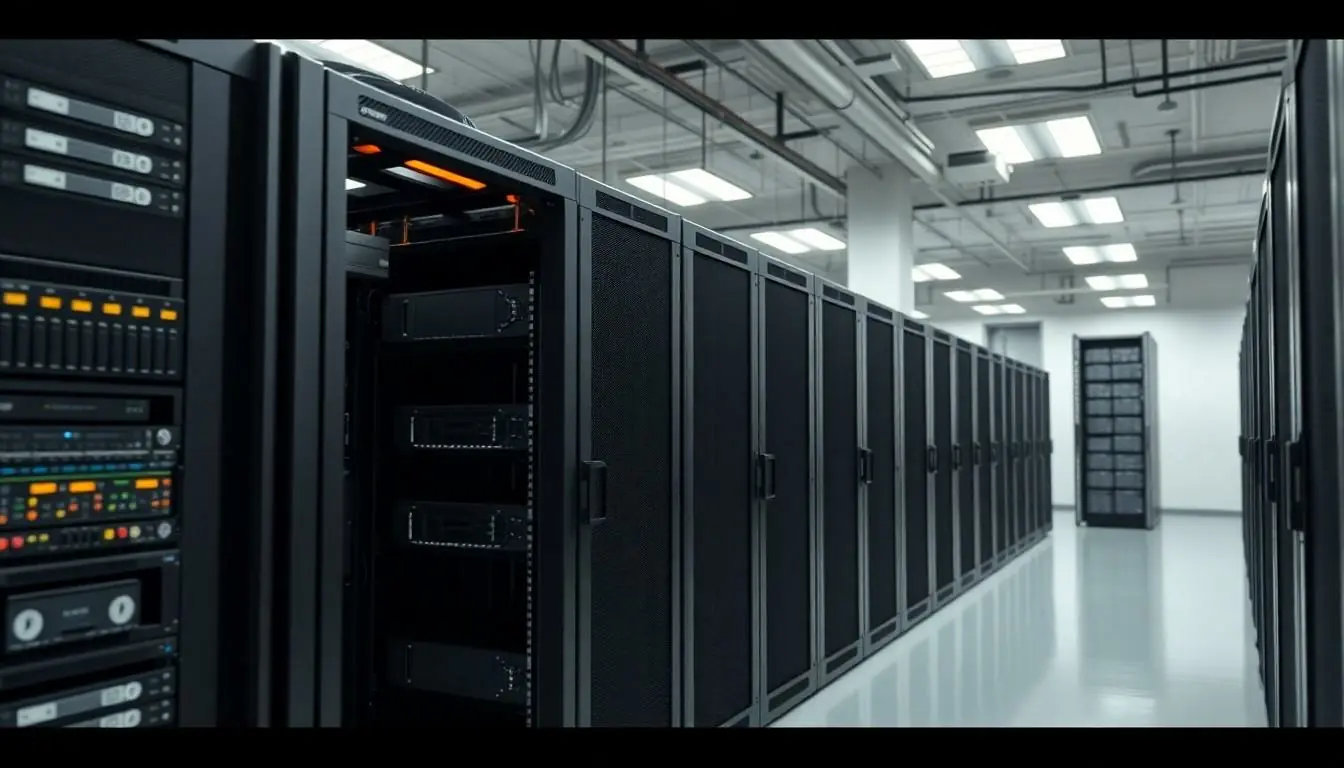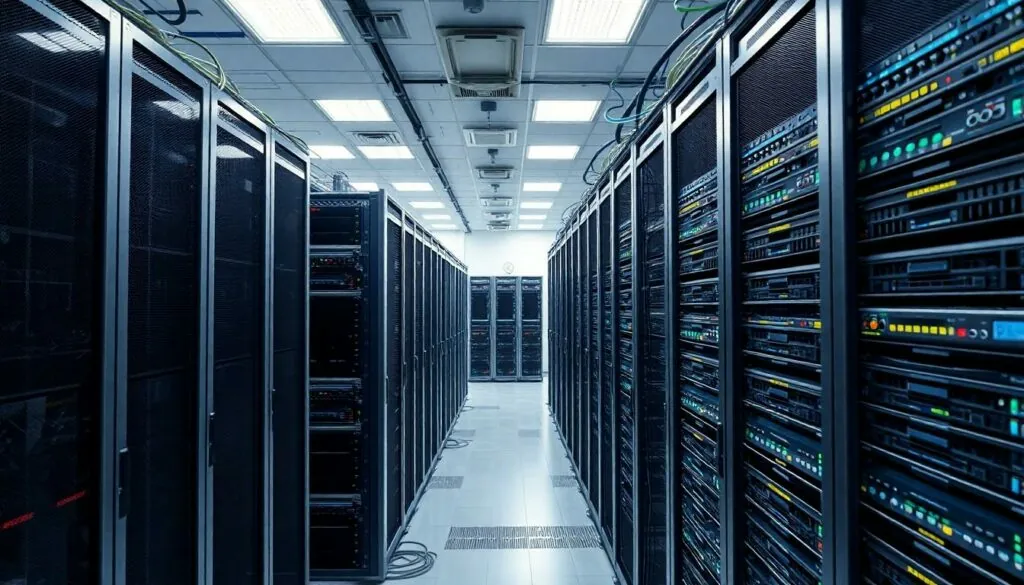Table of Contents
ToggleIn a world where data reigns supreme, rack space technology is the unsung hero of the digital age. Picture this: a bustling server room filled with sleek, organized racks, each one a fortress guarding vital information. It’s like a Tetris game for tech enthusiasts, where every piece fits perfectly, ensuring efficiency and performance.
Overview of Rack Space Technology
Rack space technology plays a vital role in modern data management, providing structured solutions for organizing hardware and optimizing storage. Its effective use significantly enhances system performance and reliability in data centers.
Definition and Purpose
Rack space technology refers to the systems and frameworks designed to house computer servers and equipment in a centralized manner. Organizations utilize racks to organize hardware efficiently, facilitating better airflow and improved cooling. The primary purpose of this technology lies in maximizing space utilization within server rooms while ensuring easy access for maintenance and upgrades. Managed correctly, rack systems enable organizations to scale their IT infrastructure seamlessly.
Key Features and Benefits
Rack space technology boasts several key features, including modular design and customizable configurations. Modular designs allow organizations to adapt rack layouts based on specific needs, optimizing physical space. Enhanced cooling solutions, like airflow management, contribute to energy efficiency and equipment longevity. Additionally, many racks include cable management systems that streamline connections, reducing clutter. Overall, rack space technology offers considerable advantages, such as improved accessibility, reduced operational costs, and increased organizational control over hardware resources.
Types of Rack Space Technology

Various types of rack space technology cater to different needs within data management. Each system offers unique features that enhance the organization and efficiency of hardware.
Traditional Rack Systems
Traditional rack systems typically consist of standardized metal frames designed for server storage. These racks accommodate 19-inch wide equipment, aligning with industry standards. Ventilation remains a crucial component, ensuring optimal airflow around servers. Some racks come with adjustable shelves, providing flexibility for various hardware setups. Organizations often choose these systems for their straightforward design and durability. Accessibility is enhanced through open-frame options, allowing easy installation and maintenance.
Modular Rack Solutions
Modular rack solutions provide a customizable approach to data storage. These racks enable scalability, allowing organizations to add or remove components based on their needs. Manufacturers design shelves and mounting parts specifically for easy reconfiguration. Integration of power and cooling solutions within these racks enhances energy efficiency. Commonly, these systems support various equipment sizes, ensuring compatibility with diverse hardware. Security options, such as locking doors and panels, increase protection for valuable assets.
Applications of Rack Space Technology
Rack space technology plays a pivotal role in various sectors. This section examines key applications in data centers and cloud computing.
Data Centers
Data centers utilize rack space technology to efficiently manage hardware. Racks house servers, storage devices, and networking equipment, ensuring optimal airflow and cooling. A modular design allows for scalability as needs grow or change. Operating within these organized systems, equipment remains accessible for maintenance and upgrades. This setup minimizes downtime and enhances reliability. Energy efficiency comes as a priority, reducing operational costs while supporting high-performance computing. Technological advancements keep data centers competitive, meeting the demands of increasing data traffic.
Cloud Computing
Cloud computing relies heavily on rack space technology for resource allocation. Virtualization in these environments maximizes the use of physical hardware. Scalable systems allow organizations to adjust their resources quickly based on user demand. Efficient management of hardware resources ensures smooth operation of cloud services. Additionally, rack solutions enhance security through features like controlled access and monitoring. Companies benefit from reduced capital expenditures, as they can leverage existing infrastructure. Ultimately, effective utilization of rack space technology results in improved service delivery and customer satisfaction in cloud environments.
Advantages of Rack Space Technology
Rack space technology provides several significant advantages for organizations managing data.
Scalability
Scalability stands as a key benefit of rack space technology. Organizations can expand storage capacity by simply adding additional racks or servers. This modular design allows for easy adjustments as data needs change over time. For instance, a growing business can integrate new equipment without extensive overhauls, maintaining operational continuity. Efficiently adding or removing components meets varying demand levels, optimizing resource management. The flexibility inherent in these systems ensures that businesses adapt quickly to market shifts or internal growth.
Energy Efficiency
Energy efficiency plays a vital role in rack space technology, significantly reducing operational costs. Optimized airflow within structured environments lowers cooling requirements, leading to less energy consumption. Many modern rack systems utilize innovative cooling solutions that recycle air more effectively. This approach not only saves power but also extends the lifespan of equipment, reducing replacement costs. When businesses prioritize energy-efficient designs, they often witness lower electricity bills and a reduced carbon footprint. Enhanced management of power distribution also supports better resource utilization and overall sustainability in data centers.
Challenges and Considerations
Rack space technology presents various challenges that organizations must address to optimize their data management systems.
Cost Implications
Costs associated with rack space technology can significantly impact budgets. Initial expenses include purchasing equipment and installation, while ongoing costs involve maintenance, power consumption, and cooling requirements. Organizations may face higher operational costs if they opt for high-density racks, driven by increased energy usage. Additionally, adapting infrastructure for scalability introduces financial implications as organizations expand. Evaluating total cost of ownership helps in making informed decisions about investments in rack space technology. Understanding potential efficiency gains can offset initial costs, leading to long-term savings.
Physical Space Limitations
Physical space constraints influence the effectiveness of rack space technology. Data centers often have limited room for expansion, leading to challenges in maximizing available space. Ensuring proper airflow and cooling within confined areas requires careful planning and design. Racks must be arranged strategically to avoid obstruction and maintain efficiency. Some organizations may opt for modular designs that adapt to changing needs, but space limitations can still hinder scalability. Analyzing current and future spatial needs remains crucial for organizations to effectively use rack space technology. Planning ahead allows for optimized layouts and ensures future growth is sustainable.
Rack space technology stands as a cornerstone of efficient data management in today’s digital landscape. Its ability to enhance organization and optimize resources significantly impacts operational performance. By providing scalable and energy-efficient solutions, it empowers organizations to adapt to evolving demands while maintaining cost-effectiveness.
As businesses increasingly rely on data-driven decisions, the importance of robust rack space systems cannot be overstated. They not only improve accessibility and control over hardware but also contribute to sustainability efforts through reduced energy consumption. Embracing these technologies will ensure organizations remain competitive and capable of meeting future challenges in an ever-changing environment.





